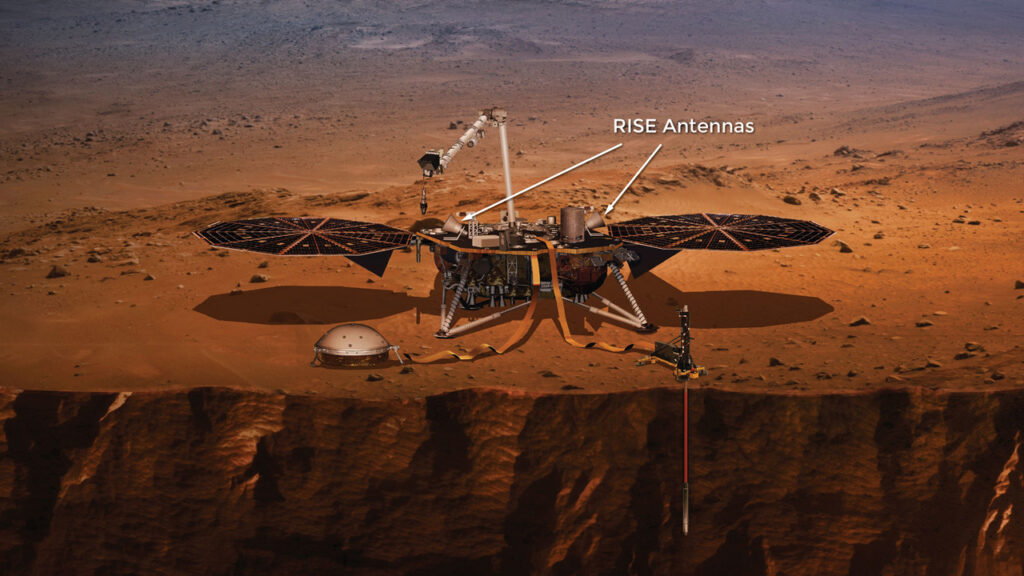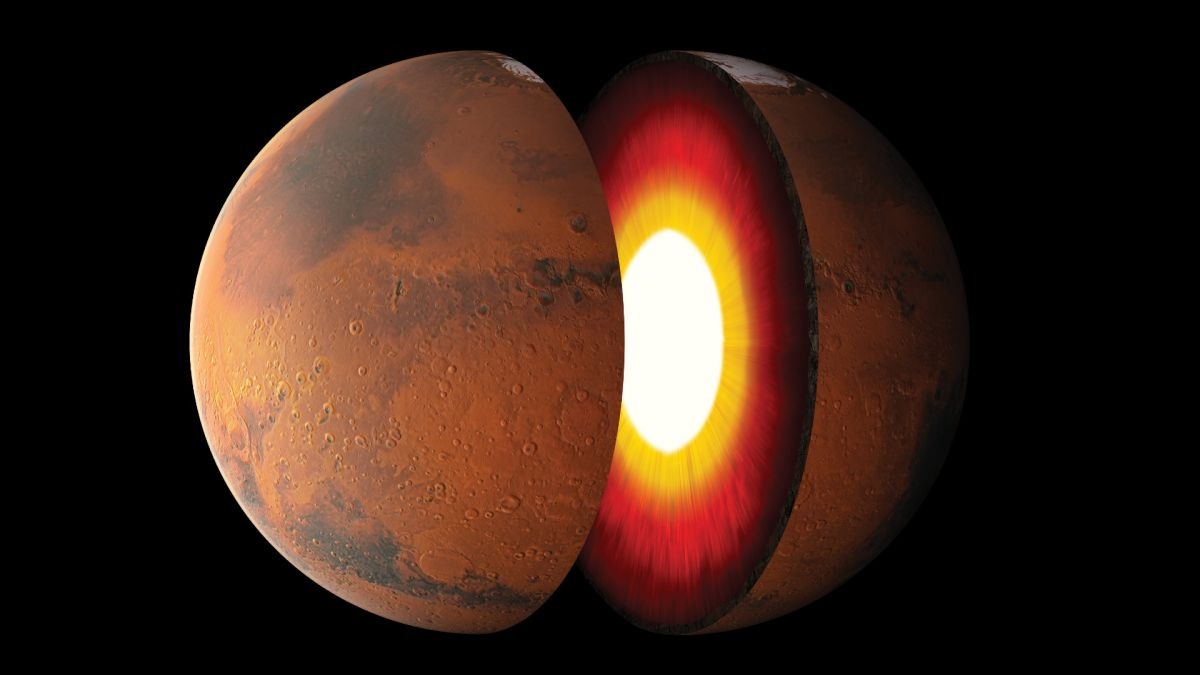Using data from the InSight mission, scientists have made the most accurate measurements of the rotation of Mars in history. It turns out that the speed of rotation of the Red Planet around its axis increases slightly.
How to measure the rotation speed of Mars
Measurements of the rotation speed of Mars were performed during the RISE experiment (Rotation and Interior Structure Experiment). In its course, scientists transmitted a radio signal to the InSight spacecraft located on the surface of the planet, which then reflected it back. Having received the reflected signal, the scientists looked for tiny frequency changes caused by the Doppler shift, which made it possible to determine the speed of rotation of the planet.

It was not an easy task, because it was about finding deviations of less than 40 cm, which required enormous work on noise filtering. But after analyzing the data for the first 900 days of InSight, they managed to get the necessary data.
It is worth saying that InSight was not the first spacecraft that was used by NASA to measure the rotation speed of Mars. Similar experiments were previously conducted with Viking and Pathfinder landing platforms. But thanks to the appearance of more advanced technology and the use of new data processing methods, the researchers managed to significantly increase the accuracy of measurements.
Acceleration of the rotation of Mars
InSight data analysis has revealed the so-called rocking of Mars, which occurs due to the fact that the planet’s core is partially liquid. This made it possible for scientists to estimate its radius. The figure they received was 1,835 km.

The researchers then compared this figure with two previous estimates of the core radius based on InSight seismometer data. In particular, they pay attention to how seismic waves propagate in the interior of the planet — whether they are reflected from the core or pass through it unhindered. Taking into account all three measurements, they obtained an estimate of the radius of the core in 1790 – 1850 km. For comparison, the radius of the entire Mars is 3390 km.
InSight data also allowed another discovery to be made. It turns out that Mars rotates with a slight acceleration of about 4 angular milliseconds per year. This means that every Martian year, the duration of the day on Mars is slightly reduced.
At the moment, scientists have several versions of what causes the acceleration of the rotation of Mars. It may be associated with the accumulation of ice at its poles or the processes of raising the territory after the end of the last ice age. The displacement of the planet’s mass can cause acceleration, similar to how a skater spins on skates with his arms outstretched and then retracts them. Also, the dynamics of Mars’ rotation could be affected by the inhomogeneous density of its core.
According to https://www.nasa.gov
Follow us on Twitter to get the most interesting space news in time
https://twitter.com/ust_magazine
